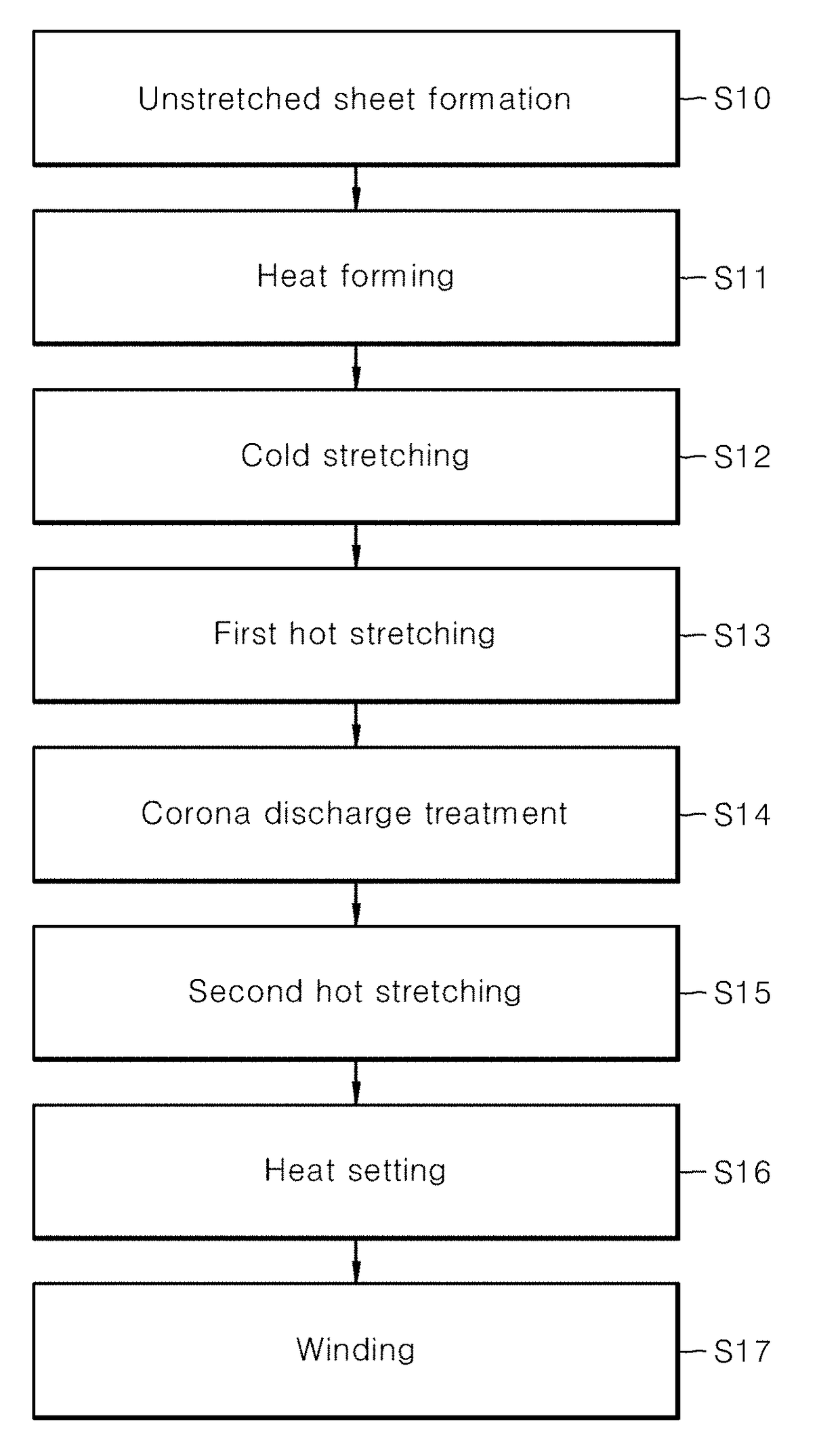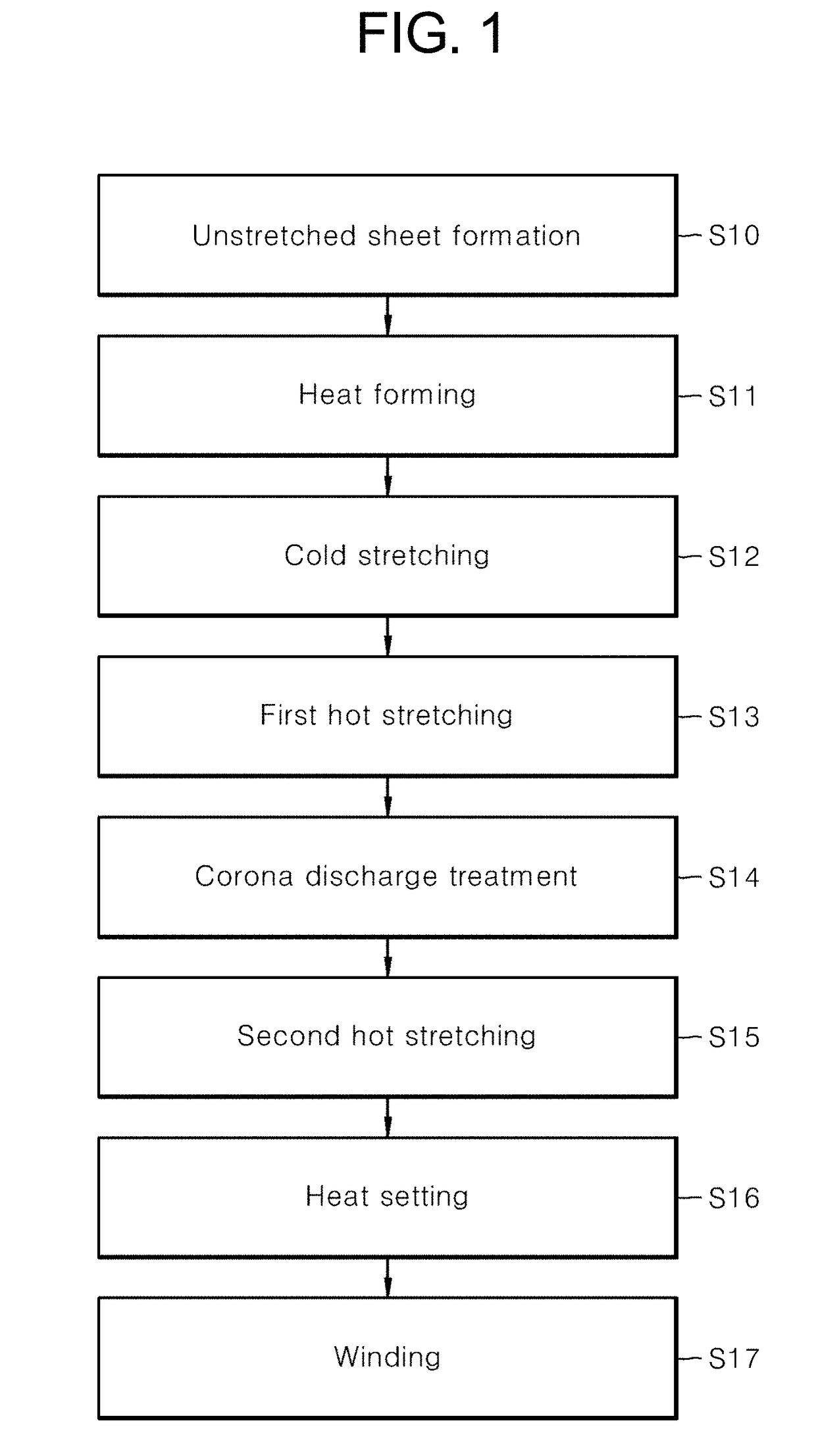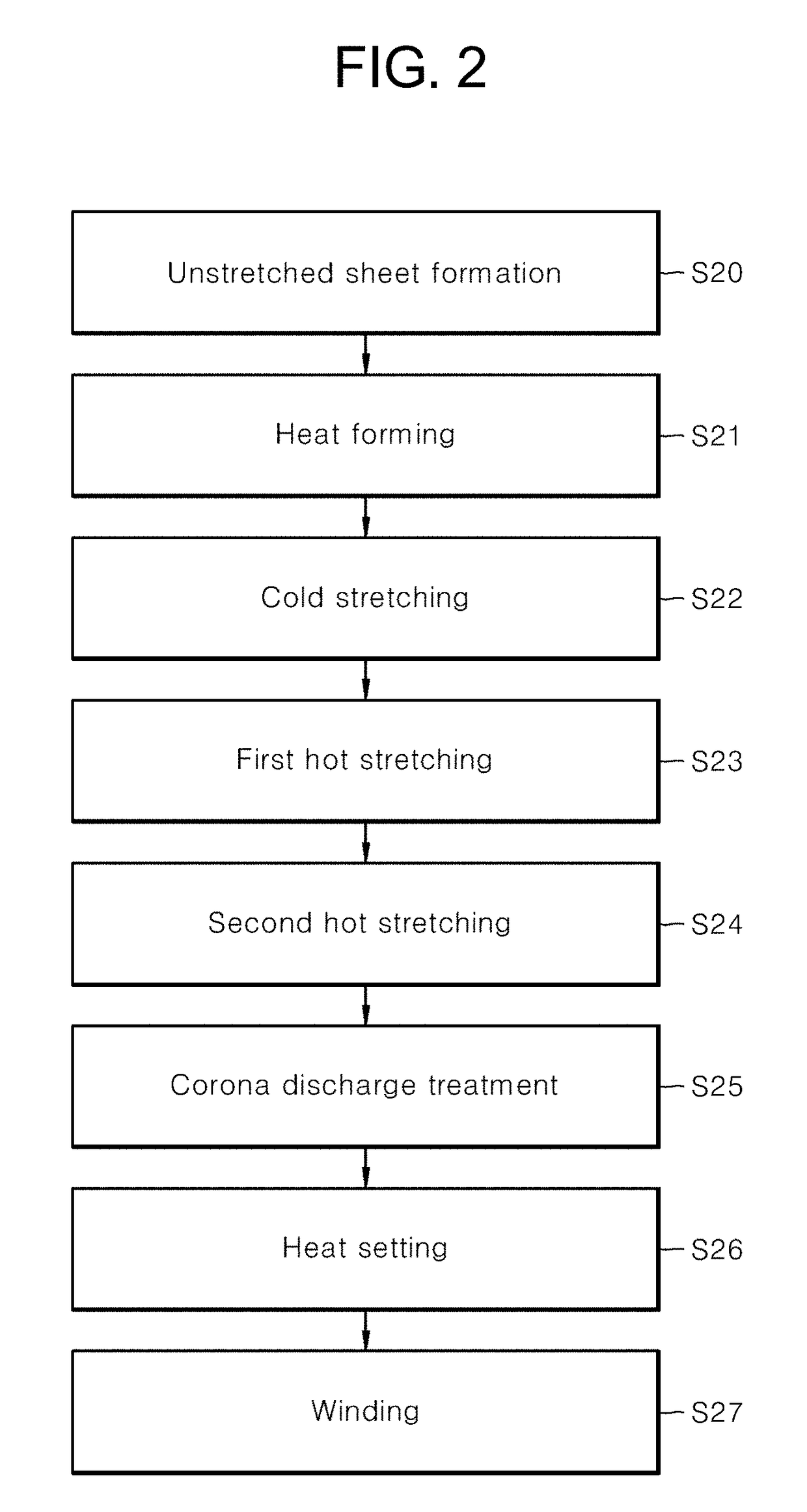Method of manufacturing battery separator using treatment of modifying surface
a technology of modifying surface and battery cell, which is applied in the direction of cell components, final product manufacturing, sustainable manufacturing/processing, etc., can solve the problems of unfavorable environmental protection, reduced price competitiveness, and uniform pores, and achieve the effect of satisfying air permeability and puncture strength properties, improving thermal shrinkage and wettability of the battery cell
- Summary
- Abstract
- Description
- Claims
- Application Information
AI Technical Summary
Benefits of technology
Problems solved by technology
Method used
Image
Examples
first embodiment
[0024]FIG. 1 is a flow chart showing a method for producing a battery separator according to a first embodiment of the present invention.
[0025]As shown in FIG. 1, in the first embodiment of the present invention, a polymer resin is first extruded to form an unstretched sheet (S10). Herein, the polymer resin is preferably semicrystalline, and may be, for example, a polymer compound selected from the group consisting of polyolefin, polyfluorocarbon, polyamide, polyester, polyacetal, polysulfide, polyvinyl alcohol, copolymers thereof, and combinations thereof. The polymer resin is preferably polyolefin resin, and example of the polyolefin resin include olefin homopolymers, including polypropylene, high-density polyethylene, low-density polyethylene, polybutene, polystyrene and the like, olefin copolymers, including ethylene-propylene copolymers, ethylene-butylene copolymers, propylene-butene copolymers and the like, and mixtures thereof.
[0026]When the polymer resin is extruded, various...
second embodiment
[0036]FIG. 2 is a flow chart showing a method for producing a battery separator according to a second embodiment of the present invention. The second embodiment is the same as the first embodiment, except that corona discharge treatment is performed after the completion of first hot stretching and second hot stretching. Accordingly, the detailed description of overlapping portions will be omitted below.
[0037]As shown in FIG. 2, in the second embodiment of the present invention, unstretched sheet formation (S20), heat forming (S21), cold stretching (S22), first hot stretching (S23), second hot stretching (S24), corona discharge treatment (S25), heat setting (S26) and winding (S27) steps are sequentially performed. As described above, the first hot stretching (S23) and the second hot stretching (S24) are preferably performed at a temperature between Tm−40° C. and Tm−10° C., wherein Tm is the melting temperature of the film. The degree of stretching in the second hot stretching is cont...
third embodiment
[0039]FIG. 3 is a flow chart showing a method for producing a battery separator according to a third embodiment of the present invention. The third embodiment is the same as the first embodiment, except that corona discharge treatment is performed after each of the first hot stretching and the second hot stretching. Accordingly, the detailed description of overlapping portions will be omitted below.
[0040]As shown in FIG. 3, in the third embodiment of the present invention, unstretched sheet formation (S30), heat forming (S31), cold stretching (S32), first hot stretching (S33), first corona discharge treatment (S34), second hot stretching (S35), second corona discharge treatment (S36), heat setting (S37) and winding (S38) steps are sequentially performed. As described above, the first hot stretching (S33) and the second hot stretching (S35) are preferably performed at a temperature between Tm−40° C. and Tm−10° C., wherein Tm is the melting temperature of the film. The degree of stret...
PUM
| Property | Measurement | Unit |
|---|---|---|
| speed | aaaaa | aaaaa |
| current | aaaaa | aaaaa |
| current | aaaaa | aaaaa |
Abstract
Description
Claims
Application Information
 Login to View More
Login to View More - R&D
- Intellectual Property
- Life Sciences
- Materials
- Tech Scout
- Unparalleled Data Quality
- Higher Quality Content
- 60% Fewer Hallucinations
Browse by: Latest US Patents, China's latest patents, Technical Efficacy Thesaurus, Application Domain, Technology Topic, Popular Technical Reports.
© 2025 PatSnap. All rights reserved.Legal|Privacy policy|Modern Slavery Act Transparency Statement|Sitemap|About US| Contact US: help@patsnap.com



